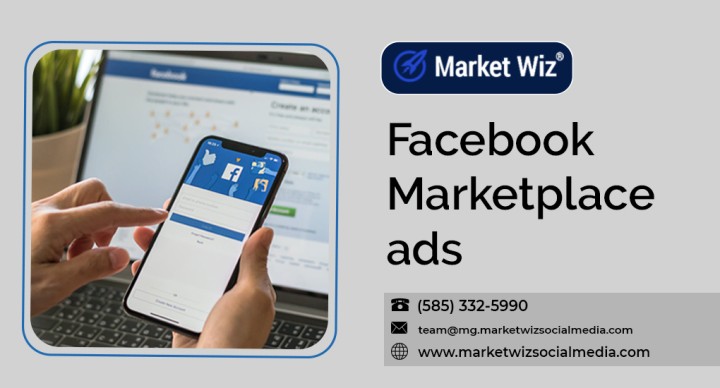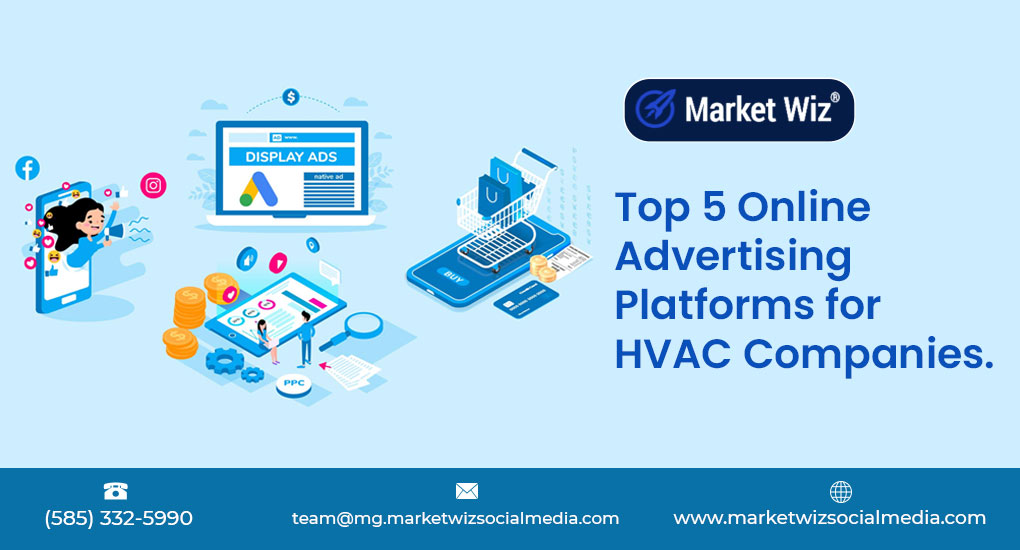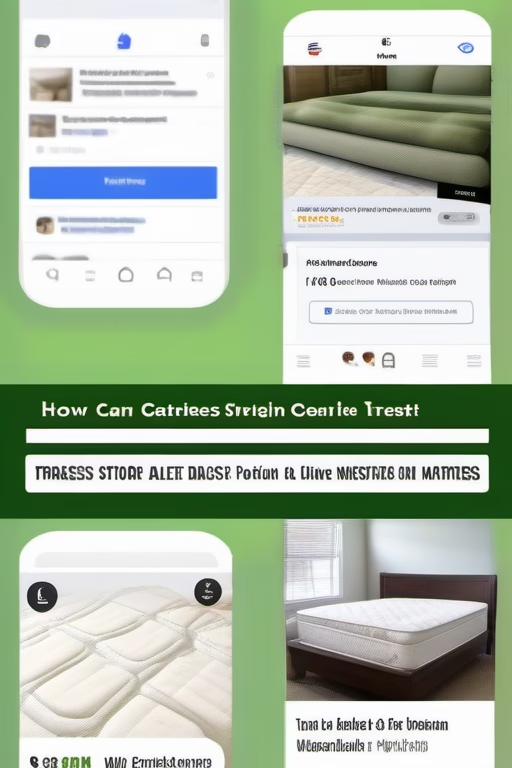B2B Social Media Marketing: A Comprehensive Guide for Digital Marketing Agencies
Understanding B2B Social Media Marketing
B2B social media marketing involves leveraging social media platforms to promote products or services to other businesses rather than individual consumers. It focuses on building professional relationships, enhancing brand visibility, and driving lead generation through strategic content and targeted engagement. For digital marketing agencies, mastering B2B social media marketing is crucial to position themselves as industry leaders and attract high-value clients.
The B2B Marketing Landscape
The B2B marketing landscape is distinct from B2C in several ways:
- Decision-Making Process: B2B purchases often involve multiple stakeholders and a longer decision-making process.
- Content Preferences: B2B audiences prefer in-depth, informative content that addresses their specific business needs and challenges.
- Relationship Building: Establishing trust and credibility is paramount in B2B marketing, as transactions are typically high-value and long-term.
Understanding these nuances is essential for crafting effective B2B social media strategies that resonate with your target audience.
Why B2B Social Media Marketing is Essential
B2B social media marketing offers a multitude of benefits that can significantly enhance your digital marketing agency's growth and success:
1. Enhanced Brand Awareness
Social media platforms provide an unparalleled opportunity to increase your agency’s visibility. By consistently sharing valuable content, engaging with your audience, and showcasing your expertise, you can establish your brand as a thought leader in the digital marketing space.
2. Lead Generation and Nurturing
Effective B2B social media strategies can drive high-quality leads by targeting specific business audiences. Utilizing features like LinkedIn’s lead generation forms and Facebook’s targeted advertising can help attract and nurture potential clients through the sales funnel.
3. Building and Maintaining Relationships
Social media fosters direct communication with your audience, enabling you to build and maintain meaningful relationships with key decision-makers and industry influencers. Engaging in conversations, responding to queries, and providing timely support can strengthen these connections.
4. Market Insights and Competitive Intelligence
Social media platforms are treasure troves of information about your target audience’s preferences, behaviors, and pain points. By monitoring social media activity, you can gain valuable insights into market trends and your competitors’ strategies, allowing you to refine your own approaches.
5. Cost-Effective Marketing
Compared to traditional marketing channels, social media offers a cost-effective way to reach a vast audience. Paid advertising options on platforms like LinkedIn and Facebook allow for precise targeting, ensuring your marketing budget is spent efficiently.
Defining Your Target Audience
A successful B2B social media marketing strategy begins with a clear understanding of your target audience. Defining your audience involves identifying the specific businesses, industries, and decision-makers you aim to reach.
Creating Detailed Buyer Personas
Developing buyer personas is a critical step in defining your target audience. A buyer persona is a semi-fictional representation of your ideal client based on market research and real data about your existing clients. Here’s how to create effective buyer personas:
- Demographic Information:
- Company size
- Industry
- Geographic location
- Annual revenue
- Role and Responsibilities:
- Job titles (e.g., Marketing Manager, CEO)
- Key responsibilities and challenges
- Pain Points and Goals:
- Specific problems your services can solve
- Business objectives they aim to achieve
- Behavioral Insights:
- Preferred social media platforms
- Content consumption habits
- Decision-making criteria
Segmenting Your Audience
Once you have defined your buyer personas, segment your audience based on factors such as industry, company size, and role within the organization. This segmentation allows for more personalized and targeted marketing efforts, increasing the likelihood of engagement and conversion.
Choosing the Right Social Media Platforms
Not all social media platforms are created equal, especially in the B2B context. Selecting the right platforms is crucial to effectively reach and engage your target audience.
Why LinkedIn?
LinkedIn is the premier platform for B2B marketing, offering a professional user base and robust targeting options. It’s ideal for networking, sharing industry insights, and generating high-quality leads.
Key Features:
- LinkedIn Pages: Create a dedicated company page to showcase your services, share updates, and engage with followers.
- LinkedIn Groups: Participate in or create groups related to your industry to network and share valuable content.
- LinkedIn Ads: Utilize sponsored content, InMail campaigns, and display ads to target specific business demographics.
Why Twitter?
Twitter is excellent for real-time engagement, industry news, and connecting with influencers. It allows for quick dissemination of information and participation in trending conversations.
Key Features:
- Tweets and Retweets: Share updates, blog posts, and engage with followers through replies and retweets.
- Hashtags: Use relevant hashtags to increase visibility and join industry conversations.
- Twitter Ads: Promote tweets and target specific audiences based on interests and behaviors.
Why Facebook?
While traditionally seen as a B2C platform, Facebook offers powerful targeting options that can be leveraged for B2B marketing. It’s useful for community building and sharing engaging content.
Key Features:
- Facebook Pages: Maintain a professional presence, share updates, and engage with followers.
- Facebook Groups: Join or create groups focused on your industry to network and share insights.
- Facebook Ads: Use advanced targeting options to reach specific business audiences based on demographics, interests, and behaviors.
YouTube
Why YouTube?
YouTube is the go-to platform for video content, making it ideal for visual storytelling, tutorials, webinars, and case studies. It enhances engagement and provides a dynamic way to showcase your expertise.
Key Features:
- Video Content: Create and share videos that educate, inform, and engage your audience.
- YouTube Ads: Utilize video ads to reach a broader audience and drive traffic to your website.
- Playlists and Channels: Organize your content into playlists and maintain a consistent channel to build a loyal subscriber base.
Instagram (Supplementary for B2B)
Why Instagram?
While more B2C-focused, Instagram can still be valuable for B2B marketing through visual storytelling, showcasing company culture, and engaging with a younger professional audience.
Key Features:
- Visual Content: Share images, infographics, and short videos that highlight your brand and services.
- Stories and Reels: Use these features for behind-the-scenes content, quick tips, and engaging visuals.
- Instagram Ads: Target specific audiences with visually appealing ads tailored to business professionals.
Crafting a Robust Content Strategy
Content is the backbone of any successful B2B social media marketing strategy. Developing a comprehensive content strategy involves creating valuable, relevant, and consistent content tailored to your target audience’s needs and preferences.
Types of Content for B2B Social Media
- Educational Articles:
Provide in-depth insights, how-tos, and best practices related to digital marketing.
Example: “10 SEO Strategies Every B2B Marketer Should Implement”
- Case Studies:
Showcase successful projects and the tangible results achieved for clients.
Example: “How We Increased Lead Generation by 50% for a SaaS Company”
- Infographics:
Present complex data and information in a visually appealing and easily digestible format.
Example: “The Ultimate Guide to B2B Social Media Metrics”
- Webinars and Live Streams:
Offer in-depth knowledge and engage your audience through interactive sessions.
Example: “Mastering LinkedIn Ads for B2B Success”
- Videos and Tutorials:
Create step-by-step guides, product demonstrations, and expert interviews.
Example: “How to Optimize Your B2B Social Media Profiles for Maximum Impact”
- Ebooks and Whitepapers:
Provide comprehensive resources that address specific business challenges and offer solutions.
Example: “The Comprehensive Guide to B2B Content Marketing”
Developing a Content Calendar
A content calendar helps organize and schedule your content efforts, ensuring consistency and timely delivery. Here’s how to create an effective content calendar:
- Identify Content Themes:
Align your content themes with your audience’s interests and your agency’s expertise.
Example Themes: SEO, PPC, Content Marketing, Social Media Strategies, Industry Trends
- Set Publishing Frequency:
Determine how often you will post on each platform based on audience engagement levels.
Example: LinkedIn – 3 times per week; Twitter – daily; Facebook – 2 times per week; YouTube – bi-weekly
- Plan Content Types:
Mix different types of content to keep your audience engaged and cater to various preferences.
Example: Mondays – Educational Articles; Wednesdays – Case Studies; Fridays – Infographics
- Assign Responsibilities:
Designate team members responsible for content creation, editing, publishing, and monitoring.
- Review and Adjust:
Regularly review the performance of your content and adjust your calendar based on insights and feedback.
Ensuring Content Quality and Relevance
High-quality content that addresses your audience’s specific needs and challenges is crucial for B2B success. Focus on the following to ensure your content remains relevant and valuable:
- Research-Driven: Base your content on thorough research and accurate data.
- Actionable Insights: Provide practical tips and strategies that your audience can implement.
- Engaging and Interactive: Use visuals, storytelling, and interactive elements to enhance engagement.
- Consistent Branding: Maintain a consistent tone, style, and messaging that aligns with your brand identity.
Leveraging LinkedIn for Maximum Impact
LinkedIn is the cornerstone of B2B social media marketing, offering unparalleled opportunities for networking, lead generation, and brand building. Here’s how to harness LinkedIn’s full potential for your digital marketing agency:
Optimizing Your LinkedIn Profile
Your LinkedIn profile is often the first impression potential clients have of your agency. Ensure it’s fully optimized to showcase your expertise and attract the right audience.
- Professional Profile Picture and Banner: Use high-quality images that reflect your brand.
- Compelling Headline: Clearly state what your agency does and the value you provide.
- Detailed About Section: Highlight your agency’s mission, services, achievements, and unique selling points.
- Showcase Services: Use the Services section to list and describe your offerings.
- Recommendations and Endorsements: Encourage satisfied clients to leave positive reviews and endorse your skills.
Building a Strong LinkedIn Company Page
A well-crafted LinkedIn Company Page serves as a hub for your brand’s presence on the platform.
- Complete All Sections: Fill out all relevant sections, including About, Services, and Specialties.
- Consistent Branding: Use your agency’s logo and branded imagery to maintain consistency.
- Regular Updates: Share updates, articles, and industry news regularly to keep your audience engaged.
- Employee Advocacy: Encourage employees to connect with the company page and share its content to amplify reach.
Engaging in LinkedIn Groups
Participating in LinkedIn Groups allows you to network with industry peers, share expertise, and engage in meaningful discussions.
- Join Relevant Groups: Select groups that align with your industry and target audience.
- Active Participation: Contribute valuable insights, answer questions, and share relevant content.
- Create Your Own Group: Establish a group focused on a specific aspect of digital marketing to position your agency as a leader.
Utilizing LinkedIn Ads for Targeted Campaigns
LinkedIn Ads offer sophisticated targeting options to reach your ideal B2B audience.
- Sponsored Content: Promote your posts to increase visibility and engagement.
- Sponsored InMail: Send personalized messages directly to potential leads’ inboxes.
- Display Ads: Use visual ads to capture attention and drive traffic to your website or landing pages.
- Dynamic Ads: Personalize ads based on the user’s profile information for higher relevance.
Sharing Valuable Content on LinkedIn
Consistently sharing high-quality content on LinkedIn is essential for establishing authority and attracting leads.
- Long-Form Articles: Publish in-depth articles that showcase your expertise and provide actionable insights.
- Visual Content: Share infographics, slideshows, and videos to enhance engagement.
- Client Success Stories: Highlight case studies and testimonials to demonstrate your agency’s impact.
- Industry News and Trends: Keep your audience informed about the latest developments in digital marketing.
Networking and Building Connections
Building a robust network on LinkedIn is crucial for B2B success.
- Connect Strategically: Send connection requests to potential clients, industry leaders, and influencers.
- Personalized Messages: Personalize your connection requests to increase acceptance rates.
- Engage with Connections: Like, comment, and share content from your connections to foster relationships.
Optimizing Twitter for B2B Engagement
Twitter is a dynamic platform that excels in real-time engagement and information dissemination. Here’s how to optimize your Twitter strategy for B2B marketing:
Crafting a Professional Twitter Profile
Your Twitter profile should clearly communicate your agency’s value proposition and expertise.
- Professional Bio: Include relevant keywords and a clear description of your services.
- Profile and Banner Images: Use branded images to enhance recognition.
- Pinned Tweet: Highlight a key message, promotion, or piece of content by pinning it to your profile.
Creating Engaging Tweets
Effective tweeting involves a mix of informative, engaging, and promotional content.
- Industry Insights: Share updates on industry trends, news, and best practices.
- Content Sharing: Promote your blog posts, case studies, and other valuable resources.
- Visuals and Media: Use images, GIFs, and videos to make your tweets stand out.
- Polls and Questions: Encourage interaction by asking questions and conducting polls.
Utilizing Hashtags Strategically
Hashtags increase the visibility of your tweets and connect you with broader conversations.
- Relevant Hashtags: Use industry-specific hashtags to reach your target audience.
- Trending Hashtags: Participate in trending conversations when relevant to your industry.
- Branded Hashtags: Create and promote a unique hashtag for your agency to encourage user-generated content.
Engaging with Influencers and Thought Leaders
Building relationships with industry influencers can amplify your reach and credibility.
- Identify Key Influencers: Use tools like Followerwonk or BuzzSumo to find relevant influencers in your niche.
- Engage Authentically: Retweet, comment, and share influencers’ content to build rapport.
- Collaborate on Content: Partner with influencers for webinars, interviews, or co-authored articles.
Monitoring and Responding to Conversations
Active monitoring of Twitter conversations allows you to engage with your audience in real-time.
- Social Listening Tools: Utilize tools like Hootsuite, Sprout Social, or TweetDeck to track mentions and keywords.
- Timely Responses: Respond promptly to mentions, questions, and comments to demonstrate responsiveness.
- Join Relevant Conversations: Participate in Twitter chats and discussions to increase your visibility.
Running Twitter Ads for Targeted Reach
Twitter Ads can help you reach a broader and more targeted audience.
- Promoted Tweets: Boost your tweets to increase their visibility and engagement.
- Follower Ads: Promote your account to gain more followers from your target demographic.
- Trend Ads: Take advantage of trending topics by promoting them within your ads.
- Video Ads: Use video content to capture attention and convey your message effectively.
Harnessing the Power of Facebook in B2B
While Facebook is predominantly a B2C platform, it offers several features that can be effectively leveraged for B2B marketing.
Creating a Professional Facebook Page
Your Facebook Page serves as a digital storefront for your agency.
- Complete Profile Information: Ensure all sections, including About, Services, and Contact Info, are fully filled out.
- Consistent Branding: Use your agency’s logo and branded cover photo to maintain a cohesive look.
- Call-to-Action (CTA): Utilize CTAs like “Contact Us” or “Learn More” to guide visitors towards desired actions.
Utilizing Facebook Groups for Networking
Facebook Groups provide a platform for community building and industry networking.
- Join Relevant Groups: Participate in groups related to digital marketing, B2B strategies, and your specific niche.
- Share Valuable Content: Contribute by sharing insightful articles, answering questions, and offering solutions.
- Create Your Own Group: Establish a group focused on a particular aspect of digital marketing to foster a community around your expertise.
Running Targeted Facebook Ads
Facebook’s advanced targeting options make it a powerful tool for B2B advertising.
- Custom Audiences: Target specific business audiences based on demographics, interests, and behaviors.
- Lookalike Audiences: Reach new potential clients by targeting users similar to your existing customers.
- Ad Formats: Utilize various ad formats like carousel ads, video ads, and lead generation forms to engage your audience effectively.
Sharing Engaging Content on Facebook
Consistently sharing diverse and engaging content helps maintain audience interest and drive engagement.
- Educational Posts: Share tips, how-tos, and industry insights to provide value to your audience.
- Client Testimonials: Highlight success stories and positive feedback from satisfied clients.
- Behind-the-Scenes Content: Showcase your agency’s culture, team, and daily operations to humanize your brand.
- Interactive Content: Use polls, quizzes, and live videos to encourage interaction and participation.
Leveraging Facebook Insights for Optimization
Facebook Insights offers valuable data on your page’s performance and audience behavior.
- Analyze Engagement Metrics: Track likes, shares, comments, and overall engagement to understand what content resonates.
- Audience Demographics: Gain insights into your audience’s age, gender, location, and interests to refine your targeting.
- Post Performance: Identify which types of posts perform best and adjust your content strategy accordingly.
Utilizing YouTube for B2B Storytelling
YouTube is a powerful platform for visual storytelling, allowing your agency to showcase expertise and engage with your audience through video content.
Creating a Professional YouTube Channel
A well-organized YouTube channel serves as a repository for all your video content.
- Channel Branding: Use your agency’s logo and a compelling banner image to establish brand identity.
- Channel Description: Clearly describe what your channel offers and how it benefits viewers.
- Organize Content: Create playlists to categorize your videos by topic, making it easier for viewers to navigate.
Developing Engaging Video Content
Video content can significantly enhance engagement and convey complex information effectively.
- Tutorials and How-Tos: Create step-by-step guides that help your audience solve specific problems.
- Webinars and Live Streams: Host live sessions to share insights, answer questions, and interact with your audience in real-time.
- Client Case Studies: Present video case studies that highlight your agency’s success stories and the value you deliver.
- Expert Interviews: Feature interviews with industry leaders and experts to provide diverse perspectives and valuable insights.
Optimizing Videos for Search
YouTube is the second largest search engine, making SEO optimization crucial for visibility.
- Keyword-Rich Titles: Incorporate relevant keywords in your video titles to improve searchability.
- Detailed Descriptions: Provide comprehensive descriptions with keywords, links, and additional information about the video content.
- Tags and Categories: Use appropriate tags and categorize your videos accurately to enhance discoverability.
- Engaging Thumbnails: Design eye-catching thumbnails that attract clicks and accurately represent your video content.
Promoting Your YouTube Content
To maximize the reach of your YouTube videos, implement effective promotion strategies.
- Cross-Promotion: Share your videos on other social media platforms, your website, and in email newsletters.
- Collaborations: Partner with other YouTubers or industry influencers to co-create content and expand your reach.
- YouTube Ads: Utilize YouTube’s advertising options to promote your videos to a broader and targeted audience.
Analyzing YouTube Performance
Regularly analyzing your YouTube performance helps refine your video strategy.
- YouTube Analytics: Monitor metrics such as views, watch time, audience retention, and engagement rates.
- Audience Feedback: Pay attention to comments and feedback to understand viewer preferences and improve content quality.
- Performance Trends: Identify which types of videos perform best and focus on creating more of what resonates with your audience.
Implementing Paid Advertising Strategies
Paid advertising on social media platforms can amplify your reach, target specific audiences, and drive measurable results. Here’s how to implement effective paid advertising strategies for B2B marketing:
Setting Clear Objectives
Before launching any paid campaign, define your objectives to ensure your efforts are aligned with your business goals.
- Brand Awareness: Increase visibility and recognition within your target market.
- Lead Generation: Capture high-quality leads through targeted campaigns.
- Website Traffic: Drive traffic to your website or specific landing pages.
- Engagement: Boost interactions with your content to foster relationships.
- Conversions: Achieve specific actions such as sign-ups, downloads, or purchases.
Choosing the Right Advertising Platforms
Select the platforms that best align with your target audience and campaign objectives.
- LinkedIn Ads: Ideal for reaching professionals and decision-makers.
- Facebook Ads: Effective for detailed targeting and retargeting strategies.
- Twitter Ads: Great for real-time engagement and promoting timely content.
- YouTube Ads: Perfect for video-based campaigns and visual storytelling.
Creating Compelling Ad Creatives
Your ad creatives should capture attention and convey your message effectively.
- Visual Appeal: Use high-quality images, graphics, and videos that align with your brand.
- Clear Messaging: Communicate your value proposition concisely and clearly.
- Strong CTAs: Encourage users to take specific actions with compelling calls-to-action.
- Consistency: Maintain consistent branding across all ad creatives for a cohesive campaign.
Targeting Your Ads Effectively
Utilize advanced targeting options to ensure your ads reach the right audience.
- Demographic Targeting: Specify criteria such as age, gender, location, and education level.
- Interest Targeting: Target users based on their interests, hobbies, and online behavior.
- Behavioral Targeting: Reach users based on their past interactions, purchase behavior, and device usage.
- Retargeting: Re-engage users who have previously interacted with your website or content.
Budgeting and Bidding Strategies
Effective budgeting and bidding are crucial for maximizing the ROI of your paid campaigns.
- Set a Budget: Determine a daily or lifetime budget based on your campaign objectives and financial constraints.
- Bidding Strategies: Choose between cost-per-click (CPC), cost-per-impression (CPM), or cost-per-action (CPA) based on your goals.
- Monitor and Adjust: Continuously monitor your campaign performance and adjust your budget and bids to optimize results.
Measuring and Optimizing Paid Campaigns
Regularly analyze your paid campaigns to ensure they are meeting your objectives and delivering a positive ROI.
- Key Metrics: Track metrics such as click-through rates (CTR), conversion rates, cost per lead (CPL), and return on ad spend (ROAS).
- A/B Testing: Experiment with different ad creatives, headlines, and targeting options to identify what works best.
- Optimize for Performance: Make data-driven adjustments to your campaigns based on performance insights.
Building and Nurturing Relationships
Building strong relationships with your audience is at the heart of successful B2B social media marketing. Here’s how to cultivate and maintain these relationships effectively:
Personalized Engagement
Personalized interactions make your audience feel valued and understood.
- Respond Promptly: Address comments, messages, and mentions in a timely manner.
- Tailor Your Responses: Customize your responses to address the specific needs and questions of your audience.
- Show Genuine Interest: Engage with your audience’s content, celebrate their achievements, and show appreciation for their support.
Consistent Communication
Maintain regular communication to stay top-of-mind with your audience.
- Regular Posting Schedule: Adhere to your content calendar and post consistently across all platforms.
- Email Integration: Use social media to drive email subscriptions and nurture leads through personalized email campaigns.
- Multichannel Approach: Engage with your audience across multiple channels, ensuring a cohesive and unified brand experience.
Providing Value Through Content
Consistently offering valuable content strengthens your authority and builds trust with your audience.
- Educational Content: Share insights, tips, and resources that help your audience solve their business challenges.
- Exclusive Offers: Provide special offers, discounts, or access to premium content for your social media followers.
- User-Generated Content: Encourage your audience to share their experiences and feature their content to foster a sense of community.
Building Trust and Credibility
Trust and credibility are essential for long-term relationships in B2B marketing.
- Transparency: Be honest and transparent in your communications, especially when addressing challenges or setbacks.
- Showcase Expertise: Demonstrate your knowledge and expertise through thought leadership content and industry insights.
- Deliver on Promises: Ensure that your services and deliverables meet or exceed client expectations consistently.
Leveraging Testimonials and Case Studies
Testimonials and case studies provide social proof and validate your agency’s capabilities.
- Client Testimonials: Share positive feedback and reviews from satisfied clients on your social media profiles.
- Detailed Case Studies: Highlight specific projects, the challenges faced, the solutions provided, and the results achieved.
- Video Testimonials: Use video testimonials to add a personal and authentic touch to your social proof efforts.
Measuring and Analyzing Performance
To ensure your B2B social media marketing efforts are effective, it’s crucial to measure and analyze your performance regularly. This allows you to identify what’s working, what’s not, and where improvements can be made.
Identifying Key Performance Indicators (KPIs)
Selecting the right KPIs is essential for measuring the success of your social media strategies. Common B2B KPIs include:
- Engagement Rate: Measures likes, shares, comments, and overall interactions with your content.
- Lead Generation: Tracks the number of leads generated through social media channels.
- Website Traffic: Monitors the amount of traffic driven to your website from social media platforms.
- Conversion Rate: Measures the percentage of leads that convert into paying clients.
- Return on Investment (ROI): Calculates the profitability of your social media campaigns relative to the costs incurred.
Utilizing Analytics Tools
Leverage analytics tools to gather and interpret data effectively.
- Google Analytics: Track website traffic, user behavior, and conversions originating from social media.
- Platform-Specific Analytics: Use built-in analytics tools like LinkedIn Analytics, Twitter Analytics, Facebook Insights, and YouTube Analytics to monitor performance on each platform.
- Third-Party Tools: Consider using tools like Hootsuite, Sprout Social, or Buffer for comprehensive social media management and analytics.
Conducting Regular Performance Reviews
Regularly reviewing your performance data helps you stay informed and make data-driven decisions.
- Monthly Reports: Create monthly performance reports to track progress towards your goals.
- Trend Analysis: Identify trends over time to understand seasonal variations and long-term patterns.
- Benchmarking: Compare your performance against industry benchmarks and competitors to gauge your standing.
Refining Your Strategy Based on Insights
Use the insights gained from your performance analysis to refine and optimize your social media strategy.
- Content Optimization: Focus on creating more of the content types that perform well and reevaluate or improve those that don’t.
- Targeting Adjustments: Refine your audience targeting based on demographic and behavioral insights.
- Budget Allocation: Allocate more budget to the platforms and campaigns that deliver the highest ROI.
Top Tools for B2B Social Media Marketing
Equipping your agency with the right tools can streamline your social media efforts and enhance efficiency. Here are some top tools to consider:
Social Media Management Tools
- Hootsuite: Offers comprehensive social media management, scheduling, and analytics features.
- Buffer: Provides easy scheduling, publishing, and performance tracking across multiple platforms.
- Sprout Social: Combines social media management with powerful analytics and team collaboration features.
Analytics and Reporting Tools
- Google Analytics: Essential for tracking website traffic and user behavior from social media.
- LinkedIn Analytics: Offers detailed insights into your LinkedIn performance and audience demographics.
- Twitter Analytics: Provides data on tweet performance, engagement, and follower growth.
- Facebook Insights: Delivers in-depth analysis of your Facebook Page’s performance and audience interactions.
- YouTube Analytics: Tracks video performance metrics such as views, watch time, and audience retention.
Content Creation Tools
- Canva: A user-friendly graphic design tool for creating visually appealing social media graphics.
- Adobe Creative Cloud: Offers professional-grade design tools for creating high-quality visual content.
- Lumen5: Converts blog posts and articles into engaging video content effortlessly.
SEO and Keyword Research Tools
- SEMrush: Provides comprehensive SEO and keyword research tools to optimize your content for search.
- Ahrefs: Offers detailed backlink analysis, keyword research, and competitive analysis features.
- Moz: Delivers robust SEO tools for keyword research, link building, and site audits.
Automation and Scheduling Tools
- Zapier: Automates workflows by connecting different apps and services, saving time on repetitive tasks.
- IFTTT (If This Then That): Creates automated actions between various apps and devices based on predefined triggers.
- Later: Specializes in visual content scheduling, particularly for platforms like Instagram and Pinterest.
Customer Relationship Management (CRM) Tools
- Salesforce: A leading CRM platform that integrates with social media to manage leads and customer interactions.
- HubSpot CRM: Offers seamless integration with social media for tracking and managing customer relationships.
- Zoho CRM: Provides social media integration features to enhance lead generation and customer engagement.
Best Practices for B2B Social Media Marketing
Adhering to best practices ensures that your B2B social media marketing efforts are effective and yield positive results. Here are some essential best practices to follow:
Consistency is Key
Maintaining a consistent posting schedule keeps your audience engaged and ensures your brand remains top-of-mind.
- Regular Posting: Stick to your content calendar and post consistently across all platforms.
- Brand Voice: Maintain a consistent tone and style that reflects your brand’s personality.
- Visual Consistency: Use consistent colors, fonts, and imagery across all your social media profiles.
Personalize Your Approach
Tailor your messaging to address the specific needs and challenges of your target audience.
- Segmented Content: Create different content streams for different audience segments based on their unique requirements.
- Personalized Communication: Use personalized greetings and messages when engaging with your audience.
- Relevant Offers: Provide offers and solutions that directly address the pain points of your target audience.
Invest in Quality Content
High-quality content is essential for establishing authority and building trust with your audience.
- Original Content: Focus on creating unique and original content that offers genuine value.
- Professional Presentation: Ensure your content is well-designed, free of errors, and professionally presented.
- Comprehensive Coverage: Provide in-depth information that thoroughly addresses your audience’s needs and questions.
Monitor Competitors
Keeping an eye on your competitors’ social media activities helps you identify opportunities and stay ahead.
- Competitive Analysis: Analyze your competitors’ content, engagement strategies, and audience interactions.
- Identify Gaps: Look for gaps in your competitors’ strategies that you can exploit to differentiate your agency.
- Benchmarking: Compare your performance metrics against those of your competitors to identify areas for improvement.
Adapt and Evolve
The digital landscape is constantly changing, and your social media strategies must evolve accordingly.
- Stay Updated: Keep abreast of the latest social media trends, platform updates, and industry developments.
- Flexibility: Be willing to adjust your strategies based on performance data and changing market conditions.
- Continuous Learning: Invest in ongoing training and professional development for your team to stay ahead of the curve.
Foster Engagement and Interaction
Encouraging active participation from your audience strengthens relationships and enhances brand loyalty.
- Ask Questions: Pose thought-provoking questions to stimulate discussions and gather insights.
- Host Contests and Giveaways: Organize contests and giveaways to boost engagement and attract new followers.
- Encourage User-Generated Content: Invite your audience to share their experiences and feature their content on your profiles.
Optimize for Mobile
With the majority of social media users accessing platforms via mobile devices, ensuring your content is mobile-friendly is crucial.
- Responsive Design: Ensure your content displays correctly on all device sizes and orientations.
- Fast Loading Times: Optimize images and videos for quick loading to prevent user frustration.
- Mobile-Friendly Formats: Use formats that are easy to view and interact with on mobile devices, such as vertical videos and swipe-friendly carousels.
Common Challenges and How to Overcome Them
B2B social media marketing comes with its own set of challenges. Here’s how to address some of the most common obstacles:
Challenge 1: Measuring ROI
Solution:
- Set Clear Goals: Define specific, measurable objectives for your social media campaigns.
- Use Analytics Tools: Leverage tools like Google Analytics, LinkedIn Analytics, and Facebook Insights to track performance.
- Attribution Models: Implement attribution models to understand how different touchpoints contribute to conversions.
Challenge 2: Creating Consistent Content
Solution:
- Content Calendar: Develop a content calendar to plan and schedule your posts in advance.
- Repurpose Content: Repurpose existing content into different formats to save time and maintain consistency.
- Team Collaboration: Foster collaboration among team members to streamline content creation and approval processes.
Challenge 3: Engaging a Professional Audience
Solution:
- Value-Driven Content: Focus on creating content that provides real value, such as industry insights, actionable tips, and in-depth analyses.
- Thought Leadership: Position your agency as a thought leader by sharing expert opinions and contributing to industry discussions.
- Interactive Content: Use polls, webinars, and live Q&A sessions to engage your audience actively.
Challenge 4: Staying Updated with Platform Changes
Solution:
- Continuous Learning: Regularly educate yourself and your team about platform updates and new features.
- Follow Industry News: Subscribe to industry blogs, newsletters, and attend webinars to stay informed about the latest trends.
- Experiment and Adapt: Test new features and strategies on a small scale before fully integrating them into your campaigns.
Challenge 5: Balancing Quality and Quantity
Solution:
- Prioritize Quality: Focus on creating high-quality content that resonates with your audience, even if it means posting less frequently.
- Streamline Processes: Develop efficient content creation and approval workflows to maintain quality without compromising on quantity.
- Content Curation: Curate relevant content from reputable sources to supplement your original content and maintain a consistent posting schedule.
Future Trends in B2B Social Media Marketing
Staying ahead of emerging trends ensures your B2B social media strategies remain effective and relevant. Here are some future trends to watch:
- Increased Use of AI and Automation:
Artificial Intelligence (AI) and automation tools will play a more significant role in B2B social media marketing, enabling more efficient content creation, personalized interactions, and advanced data analysis.
- Video Content Dominance:
Video content, particularly live streaming and interactive videos, will continue to dominate, offering more engaging and dynamic ways to connect with your audience.
- Personalization and Hyper-Targeting:
Personalized content and hyper-targeted advertising will become even more critical, allowing agencies to deliver highly relevant messages to specific audience segments.
- Social Commerce Integration:
The integration of social commerce features will open new avenues for B2B transactions, enabling seamless purchasing and lead generation directly within social media platforms.
- Emphasis on Employee Advocacy:
Encouraging employees to share and promote company content will become a more prominent strategy, leveraging personal networks to expand reach and build trust.
- Data Privacy and Security Focus:
With increasing concerns about data privacy and security, B2B marketers will need to prioritize transparent data practices and ensure compliance with regulations.
- Augmented Reality (AR) and Virtual Reality (VR):
AR and VR technologies will offer innovative ways to showcase products, conduct virtual tours, and create immersive experiences for clients.
- Voice Search Optimization:
As voice search becomes more prevalent, optimizing your content for voice queries will be essential for maintaining visibility and accessibility.
- Sustainability and Social Responsibility:
Highlighting your agency’s commitment to sustainability and social responsibility will resonate with clients who prioritize ethical practices and corporate social responsibility.
- Interactive and Immersive Content:
Interactive content such as quizzes, polls, and interactive infographics will enhance engagement and provide valuable insights into audience preferences.
Conclusion
B2B social media marketing is a powerful and multifaceted strategy that digital marketing agencies can leverage to connect with other businesses, generate high-quality leads, and establish industry authority. By understanding your target audience, selecting the right platforms, creating valuable and engaging content, and continuously measuring and optimizing your efforts, your agency can harness the full potential of social media to drive growth and achieve sustained success.
Embrace the evolving landscape of B2B social media marketing by staying informed about emerging trends, adopting best practices, and leveraging advanced tools and technologies. With a strategic and well-executed approach, your digital marketing agency can stand out in the competitive digital arena, attract high-value clients, and build long-term, mutually beneficial relationships.
Frequently Asked Questions (FAQs)
What is B2B social media marketing?
B2B social media marketing involves using social media platforms to promote products or services to other businesses rather than individual consumers. It focuses on building professional relationships, enhancing brand visibility, and driving lead generation through strategic content and targeted engagement.
Why is LinkedIn important for B2B marketing?
LinkedIn is crucial for B2B marketing because it is the premier platform for professional networking. It offers robust targeting options, a professional user base, and features like LinkedIn Groups and LinkedIn Ads that are specifically designed to help businesses connect with decision-makers and industry leaders.
Which social media platforms are best for B2B marketing?
The best platforms for B2B marketing include LinkedIn, Twitter, Facebook, and YouTube. Each platform offers unique features and targeting options that can be leveraged to reach and engage with a professional audience.
How can I generate leads through social media?
You can generate leads through social media by using targeted advertising, sharing valuable content, engaging with your audience, utilizing lead magnets like ebooks and webinars, and optimizing your profiles for lead generation.
What type of content works best for B2B social media?
Educational articles, case studies, infographics, webinars, videos, and in-depth whitepapers are highly effective for B2B social media as they provide value, demonstrate expertise, and address the specific needs and challenges of your target audience.
How often should I post on social media for B2B marketing?
Maintaining a consistent posting schedule is key. Typically, this means posting 2-5 times per week on LinkedIn, daily on Twitter, 2-3 times per week on Facebook, and bi-weekly on YouTube, depending on platform-specific engagement levels and audience behavior.
Can B2B companies use Instagram for marketing?
Yes, while Instagram is more B2C-focused, B2B companies can use it for brand building, showcasing company culture, visual storytelling, and engaging with a younger professional audience through visually appealing content and Instagram Stories.
What are the key metrics to track in B2B social media marketing?
Key metrics include engagement rate (likes, shares, comments), lead generation, website traffic from social media, conversion rate, and return on investment (ROI). These metrics help assess the effectiveness of your social media strategies and campaigns.
How can I improve engagement on my B2B social media posts?
Improve engagement by creating interactive content, asking questions, responding to comments, sharing relevant industry news, using high-quality visuals, and leveraging features like polls and live videos to encourage participation.
Is paid advertising necessary for B2B social media marketing?
While not mandatory, paid advertising can significantly enhance your reach and targeting capabilities, making it a valuable component of B2B social media strategies. It helps you reach a broader and more specific audience, driving higher-quality leads and better ROI.
How do I create a buyer persona for B2B marketing?
Identify your ideal client's demographics, job roles, challenges, goals, and behaviors. Use market research, surveys, and data analysis to gather insights and create detailed buyer personas that guide your marketing strategies and content creation.
What role does content marketing play in B2B social media?
Content marketing is central to B2B social media as it provides valuable information that attracts and engages your target audience. It helps establish your authority, build trust, and nurture leads through informative and actionable content.
How can I use Twitter for B2B marketing?
Use Twitter to share industry news, engage in relevant conversations, connect with influencers, utilize hashtags for increased visibility, and promote your content. Participating in Twitter chats and hosting live events can also enhance your B2B marketing efforts.
What is the best way to use LinkedIn Groups for B2B marketing?
Participate actively by sharing insights, answering questions, and networking with group members. Provide valuable content and contribute to discussions to build relationships and establish your agency as a thought leader within the group.
How important is visual content in B2B social media?
Visual content is highly important as it enhances engagement, makes complex information more accessible, and helps capture attention. Use infographics, videos, images, and interactive visuals to complement your written content and improve overall engagement.
Can webinars help in B2B social media marketing?
Yes, webinars are effective for showcasing your expertise, providing in-depth knowledge, engaging with your audience in real-time, and generating qualified leads. They also offer opportunities for follow-up interactions and relationship building.
What is the ROI of B2B social media marketing?
ROI varies based on strategies and execution, but effective B2B social media marketing can lead to increased leads, conversions, and revenue. Measuring ROI involves tracking the costs of your campaigns against the tangible results they generate.
How do I measure the success of my B2B social media campaigns?
Measure success by tracking key performance indicators (KPIs) such as engagement rates, lead generation, website traffic from social media, conversion rates, and overall ROI. Use analytics tools to gather and analyze data for informed decision-making.
What tools can help with B2B social media marketing?
Tools like Hootsuite, LinkedIn Sales Navigator, Google Analytics, Buffer, Canva, SEMrush, and HubSpot CRM can assist in managing and analyzing your social media campaigns, creating engaging content, and optimizing your marketing efforts.
How do I stay updated with B2B social media trends?
Follow industry blogs, subscribe to newsletters, attend webinars and conferences, participate in professional groups, and regularly review platform updates. Staying informed helps you adapt your strategies to align with the latest trends and best practices.
Additional Relevant Keywords
- B2B lead generation
- Social media strategy
- Digital marketing trends
- Content marketing for B2B
- LinkedIn marketing tips
- B2B branding
- Social media advertising
- B2B engagement
- Marketing automation
- Social media analytics
- B2B influencer marketing
- Lead nurturing
- Account-based marketing
- B2B SEO
- Social media ROI
- B2B content creation
- Professional networking
- B2B video marketing
- Social selling
- B2B email marketing
- Customer relationship management
- B2B marketing funnel
- Social media best practices
- B2B campaign management
- Digital transformation

















